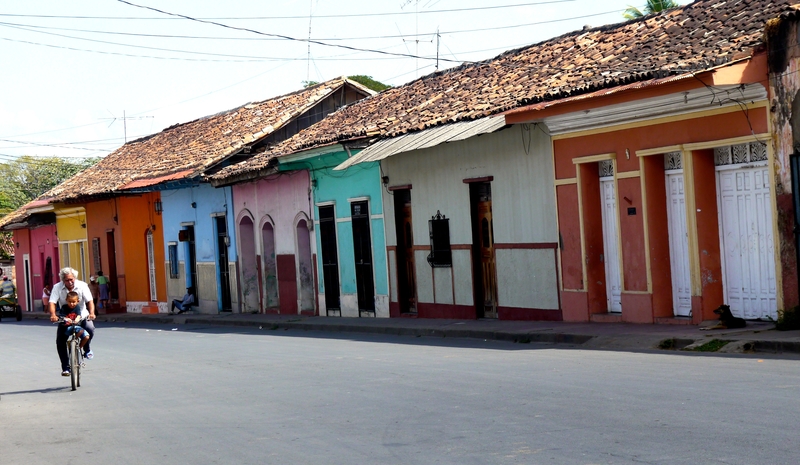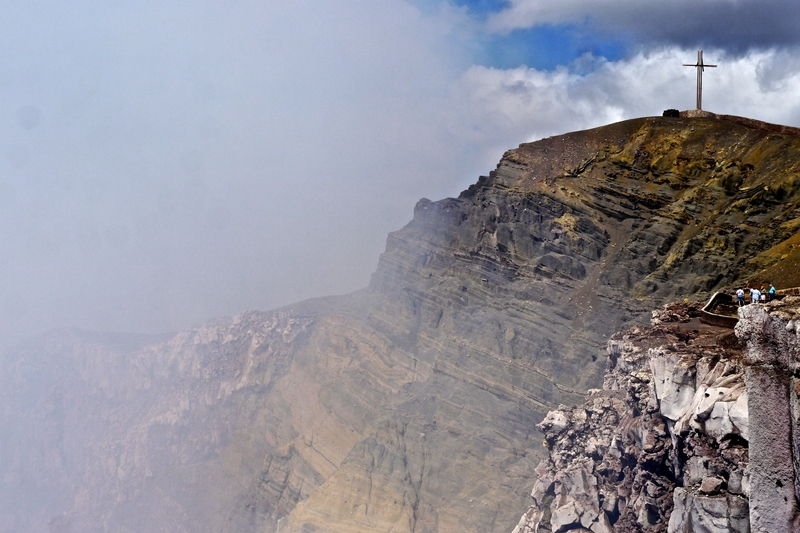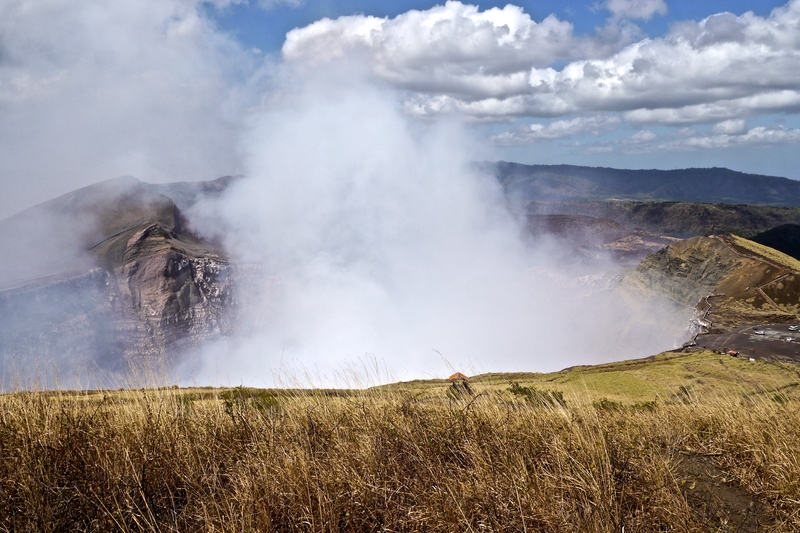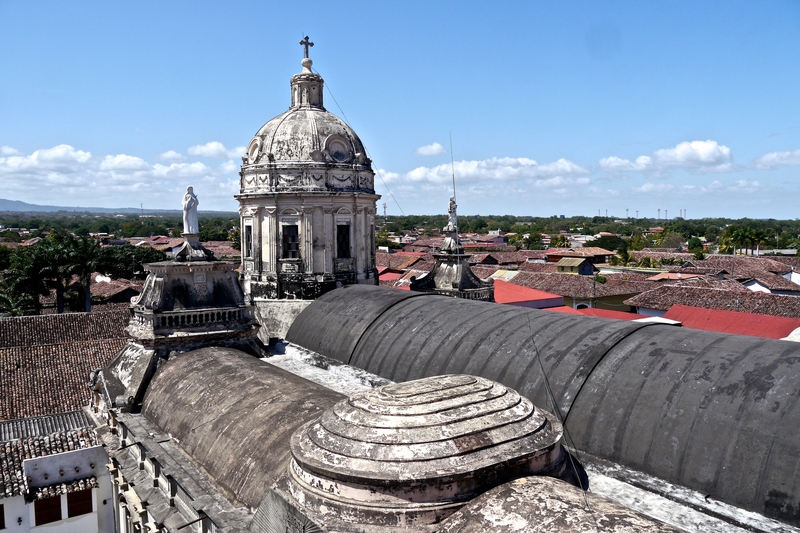
Granada and the Masaya Volcano
Granada is Nicaragua’s emblematic city– a picture-perfect colonial gem that lies just south of Managua on the country’s main tourist circuit.
The city’s photogenic, cobbled streets amble between rows of brightly colored houses and are perfectly framed by a mountainous backdrop. Granada is widely recognized as one of the oldest European settlements in the Americas and, like most European cities, centers around a square, a church and a vibrant pedestrian promenade.
With the rise of tourism in Nicaragua, Granada has drawn a steady stream of visitors and expats to its well-preserved architecture and proximity to lakes, beaches and volcanoes. As a result, the town’s designation as a tourist magnet has ensured that the streets are neatly manicured, the paint freshly applied and the cobbled streets free of rubbish and debris.
We visited Granada and its surroundings at the end of our two week trip to Costa Rica and Nicaragua and explored the picturesque town for two days–perusing art galleries, photographing colonial churches and taking in the vibrant colors of the freshly painted buildings.
However, peeling back the fresh layers of paint and looking behind the town’s charming facade, reveals a very different Nicaragua. A Nicaragua that is still trying to recover economically from many years of violence. One does not have to go far to witness widespread suffering in the country.
Along the streets and on park benches, homeless Nicaraguans attempt to eke out a living by peddling for change. and, while eating dinner at one of Calle La Calzada’s outdoor cafes can be overwhelmingly reminiscent of dining in Europe, the constant flow of beggars and street vendors serves as a reminder that, despite its appearance, Granada is still situated in one of the poorest countries in the Western Hemisphere.
Calle La Calzada is the hub of tourist activity in the city and the street stretches from the town’s central park to the shore of Lake Nicaragua. It is chock a block full of hotels, tour operators and restaurants that cater to travelers and expats. The restaurants have elevated prices that most locals could only dream of affording.
And therein lies my internal conflict with Granada for, though I thoroughly enjoyed the city and would return to its picturesque streets in a heartbeat, the juxtaposition of rich and poor is impossible to ignore and difficult to swallow.
It is unfortunately a pattern that I have come to see time and time again in the developing world.
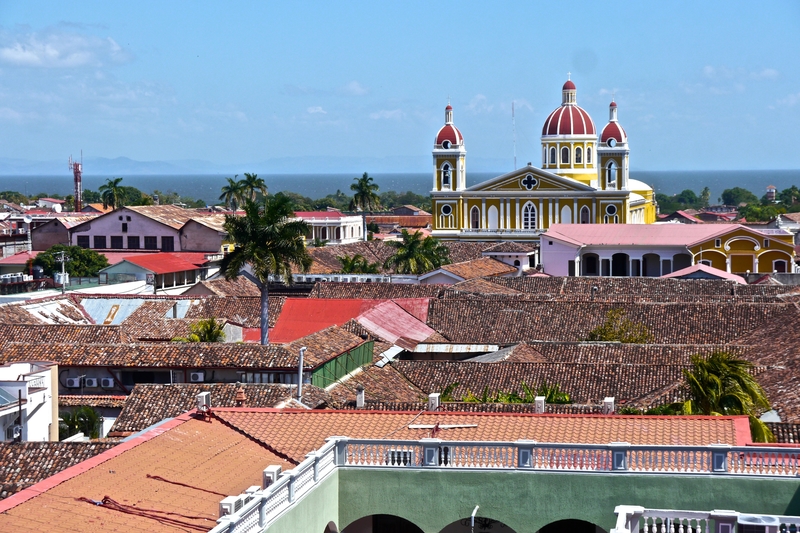
With Granada as our home base, we spent the next day exploring the area outside the city. From Granada, countless tour operators advertise day trips to the surrounding islands, lakes and mountains. Instead of taking an organized tour, however, we decided to reach the Masaya Volcano by taking a series of local chicken buses.
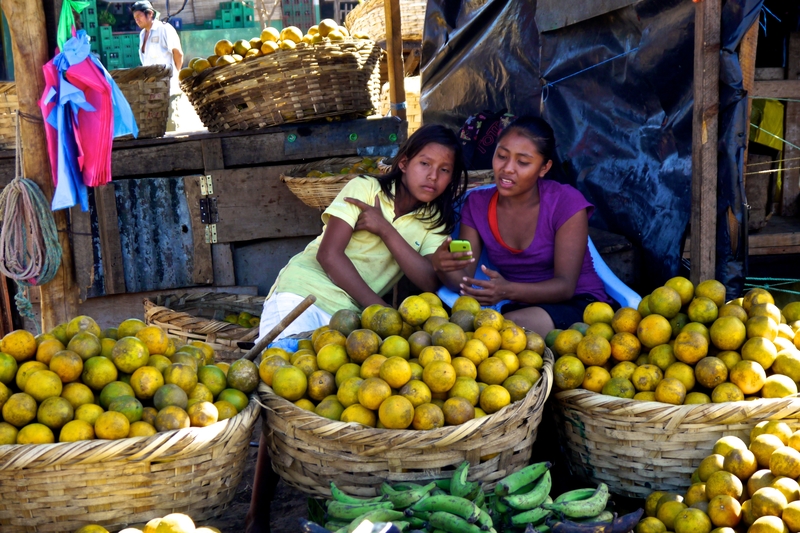 The Masaya Volcano sits just outside the limits of Masaya city–home to Nicaragua’s largest market. The market is enormous and we could have spent the whole day navigating its different sections, from the fruit stands to the piles of secondhand clothes and from the street food kiosks to the stalls of dripping meat.
The Masaya Volcano sits just outside the limits of Masaya city–home to Nicaragua’s largest market. The market is enormous and we could have spent the whole day navigating its different sections, from the fruit stands to the piles of secondhand clothes and from the street food kiosks to the stalls of dripping meat.
Yet our main objective in visiting Masaya was to climb to the top of the active Volcano outside the city.
The Masaya Volcano was designated a national park in 1979 and contains two volcanoes and five craters. Today, visitors can enjoy a series of trails that lead around the various calderas. The largest of the calderas is the Santiago crater, which spews large amounts of sulfur dioxide into the air.
Because of its emission of noxious gasses and the red hue that can at times be seen when visiting the volcano at night, Spanish invaders during the 16th century nicknamed the volcano the “Gates to Hell” and attempted to exorcise its demons by erecting a large cross on its rim. The cross, known as La Cruz de Bobadilla, attempts to warn people of the “Gates to Hell” below.
Due to the spewing sulfur, tourists are discouraged from spending too much time on the lip of the volcano. So, after a few minutes of peering down into the smoky abyss, we ventured around the rim of some of the dormant craters for sweeping views of the mountainous landscape and vast Lake Nicaragua.
The views were breathtaking.
On our way back to Granada for our last night in Central America, we stopped by the town of Catarina for a quick glimpse at the blue waters of the scenic Laguna de Apoyo.
Many travelers recommended we spend a full day at the laguna and swim in its sapphire waters. And I’m sure that a day at the lake would have been a wonderful addition to our itinerary.
Yet, after two weeks on the road, it was time to wrap up our foray into Central America and return to work.
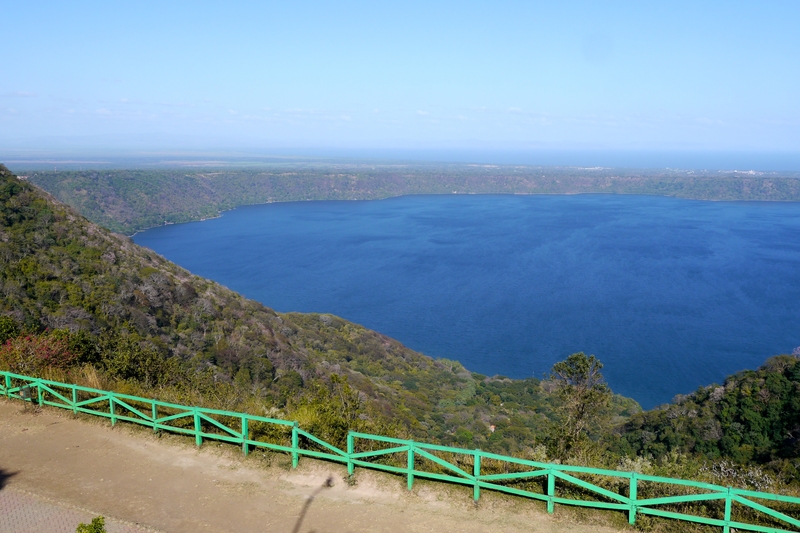 Our trip to Costa Rica and Nicaragua brought us face to face with beautiful beaches, impressive geology, historic cities and abundant wildlife. It highlighted the diversity and contrasts inherent in the region–its wealth its poverty, its present peace and its violent history.
Our trip to Costa Rica and Nicaragua brought us face to face with beautiful beaches, impressive geology, historic cities and abundant wildlife. It highlighted the diversity and contrasts inherent in the region–its wealth its poverty, its present peace and its violent history.
The trip also rounded off my visit to all of the countries in Central America, though the area is so varied and diverse that there are still many places I have yet to see.
So, while I can now superficially say I have been able to check the countries in Central America off my list, I know that my travels in the region are far from finished.
***
Note: For more information on backpacking in Nicaragua, check out Will’s Nicaragua travel guide.

